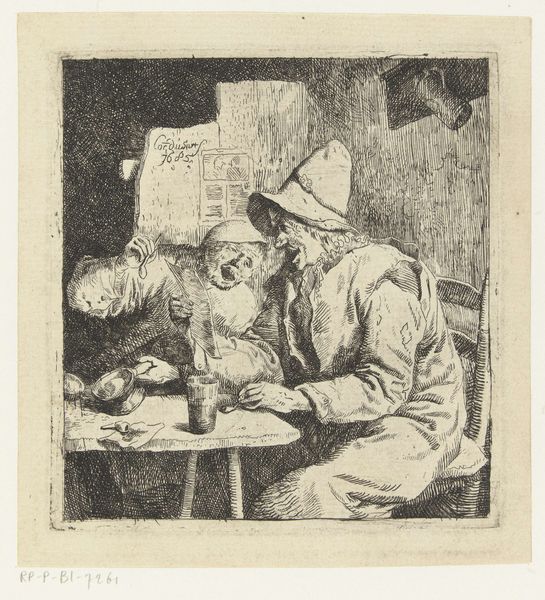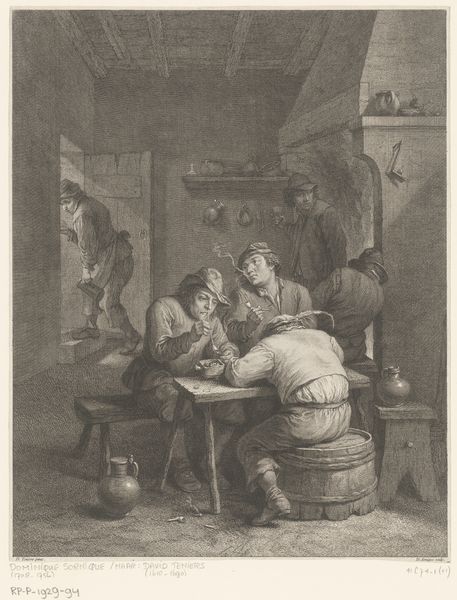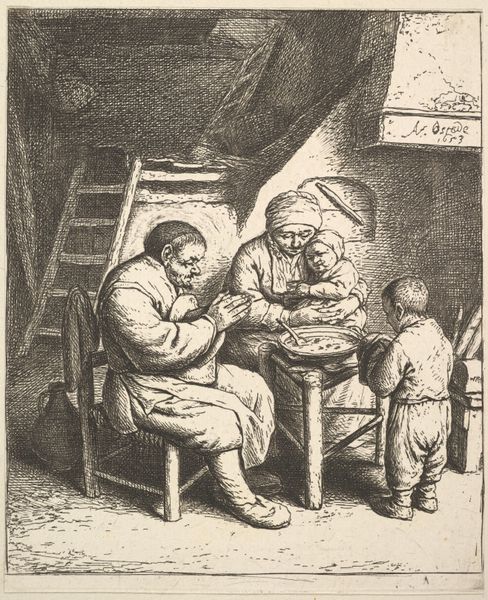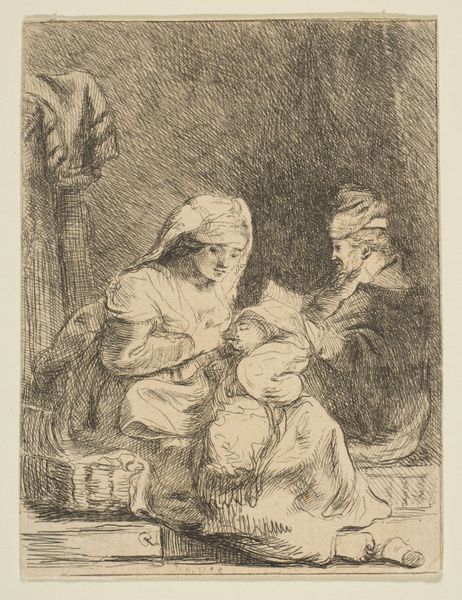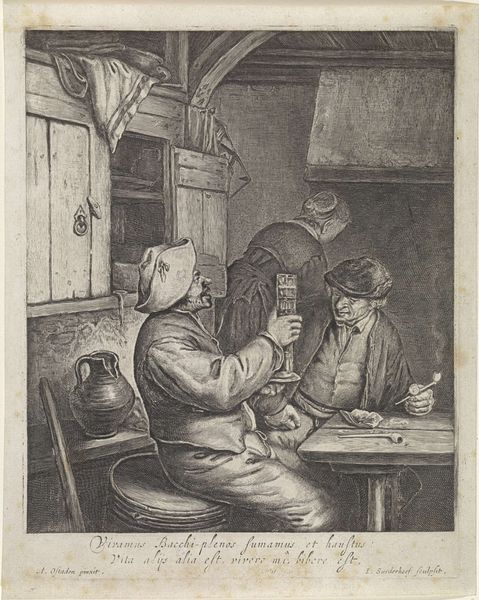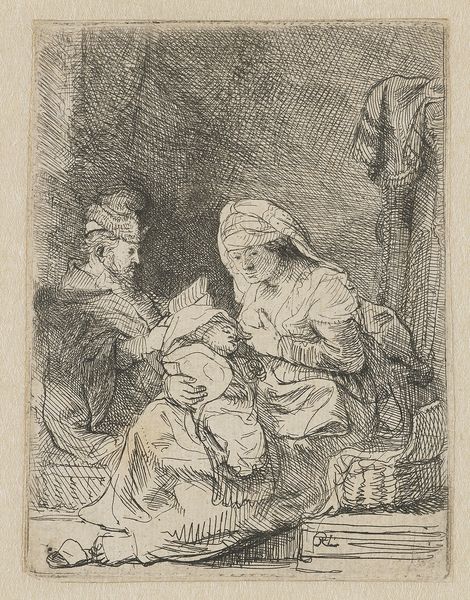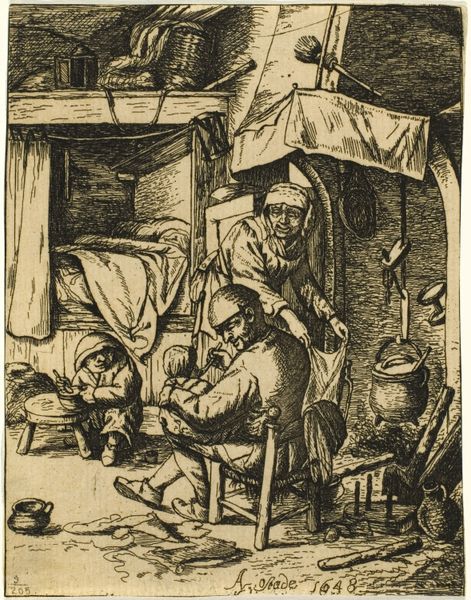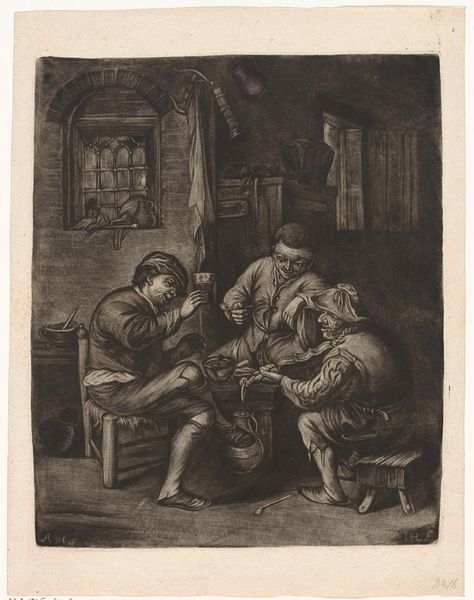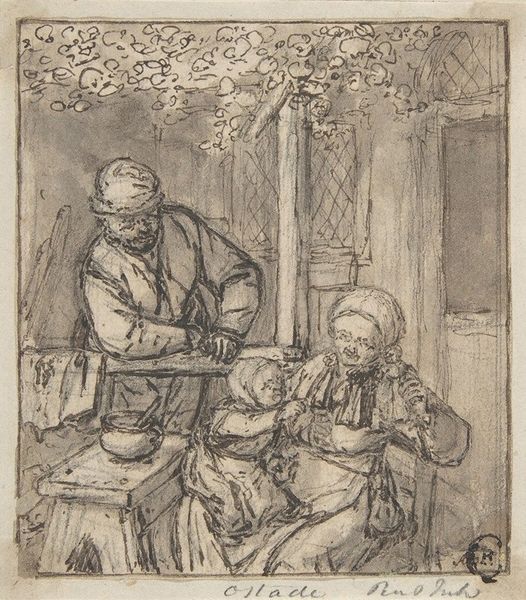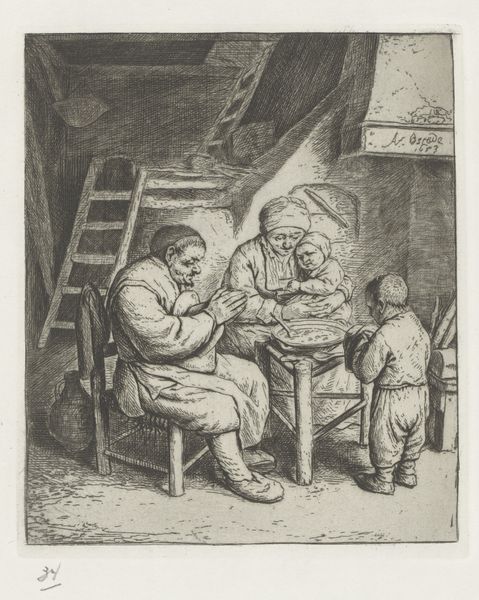
print, etching
#
portrait
#
baroque
# print
#
etching
#
genre-painting
#
realism
Copyright: National Gallery of Art: CC0 1.0
Curator: Cornelis Dusart’s etching, “Two Peasants Singing,” created in 1685, gives us an intimate glimpse into the social life of the Dutch Golden Age. Editor: The mood strikes me as incredibly convivial! There’s such obvious warmth and energy radiating from these figures; their enjoyment is palpable, even across centuries. The detail is astonishing for an etching. Curator: Absolutely. Dusart captured not only their likeness but the essence of their lived experience. Genre paintings like this one were critical in shaping societal understandings of class. Notice the expressions and gestures he uses to convey social standing and behavior. How do you think images like this shaped viewers’ understanding of the working class in 17th-century Holland? Editor: I imagine representations such as this, widely circulated through prints, both romanticized and stigmatized peasant life. They reinforced stereotypes about merriment and simple pleasures, while also, perhaps, highlighting social differences, "othering" the peasant class in a sense. The act of singing, a shared cultural moment, feels staged to meet specific class expectations, doesn’t it? Curator: It’s certainly possible. Dusart was working within a highly structured artistic and economic landscape. Patronage and the market influenced subject matter significantly. His decision to depict such a common scene points to the existing, if complex, appeal of this kind of subject for buyers at the time. And to go a bit further, art like this wasn’t just about looking at; it was about being looked at too; performing in the public sphere certain gendered roles—peasants or other roles–through the objects represented and circulated through art.. Editor: True! Thinking about this image's reception and its place in broader narratives definitely enriches my understanding. I can appreciate that it goes beyond mere aesthetics or documentation, opening up dialogues on identity and social constructs. It's that social undercurrent— the 'why' and the 'who' that brings so much to this unassuming scene of common folk making music and enjoying good drink and company. Curator: I completely agree. Considering art as a part of larger visual, economic, and societal narratives enhances our understanding of history and ourselves. Editor: This has truly given me new insights on the image.
Comments
No comments
Be the first to comment and join the conversation on the ultimate creative platform.

